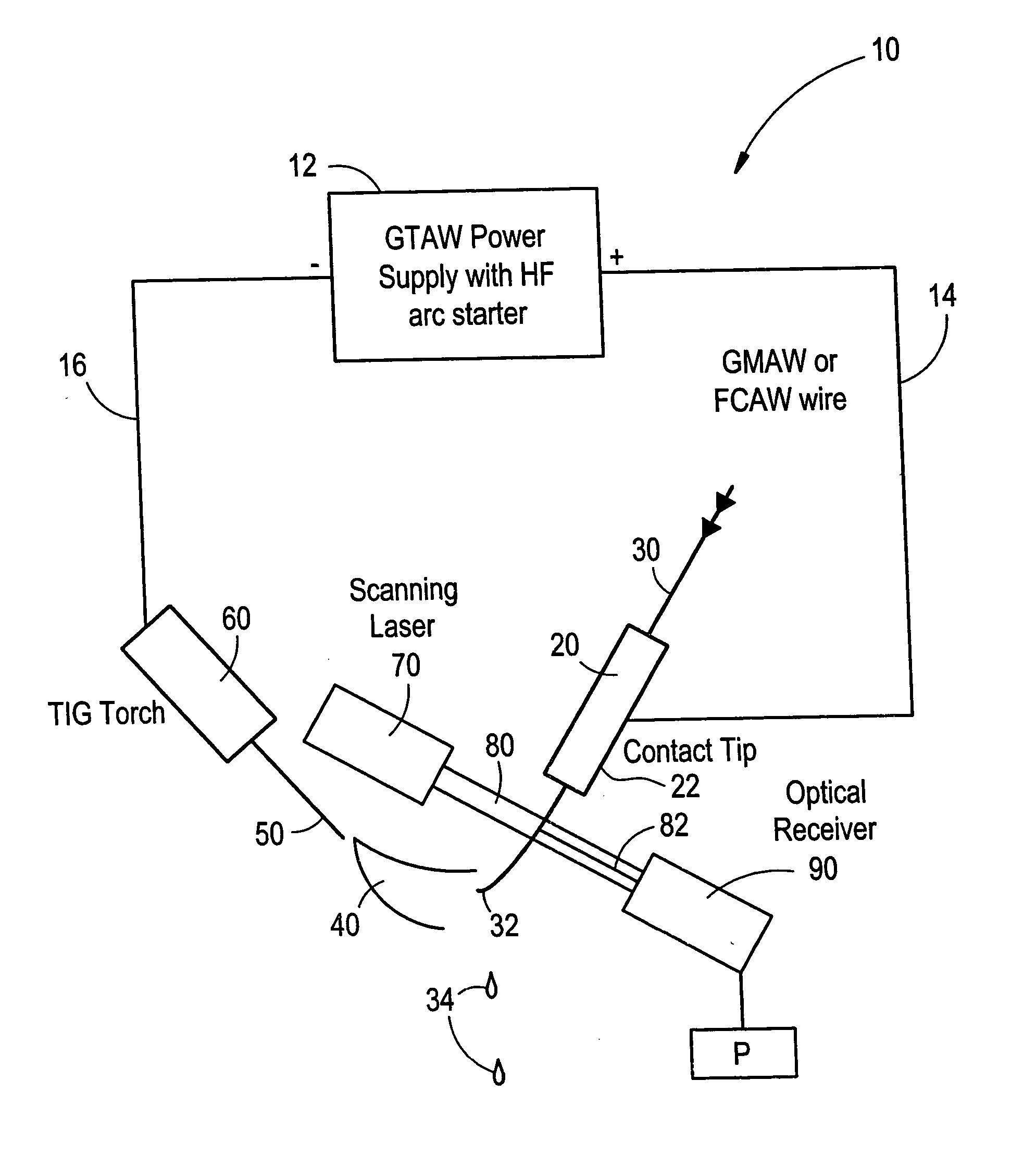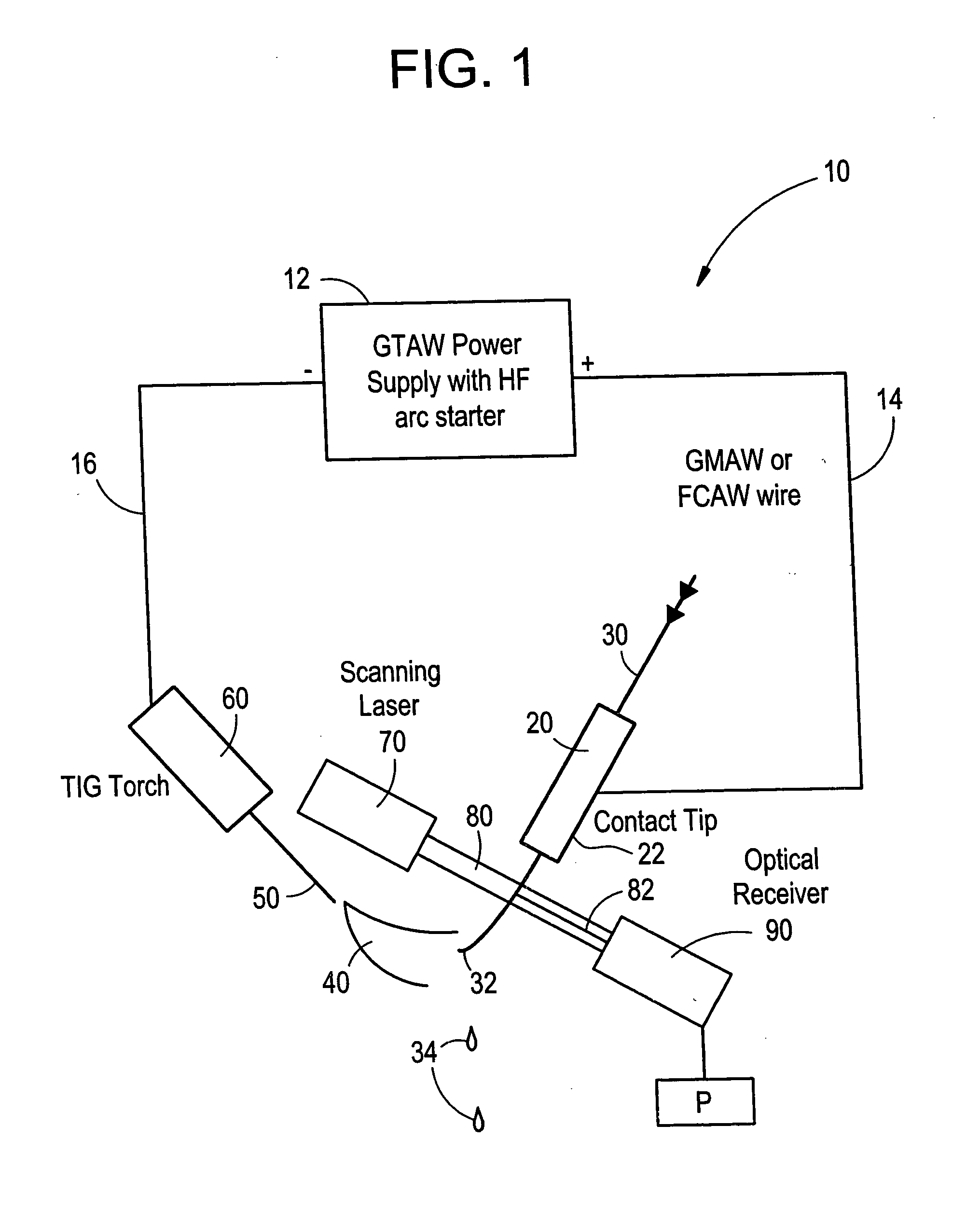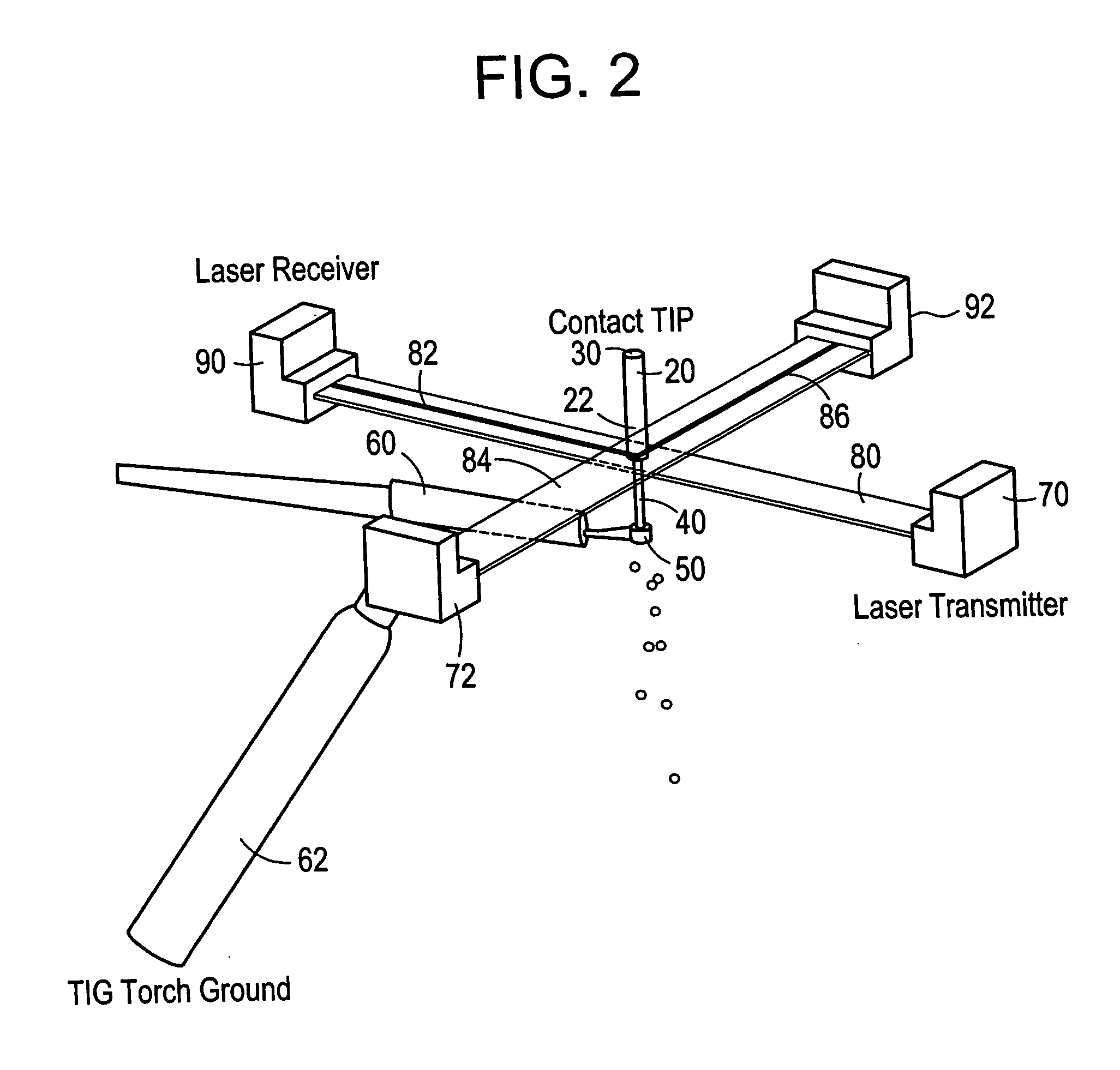Welding wire positioning system
a positioning system and welding wire technology, applied in the direction of soldering equipment, manufacturing tools, instruments, etc., can solve the problems of welding wire wobble, inferior weld, weld wiggle of the weld bead on the workpiece, etc., to minimize the effect of conduit re-casting and minimize the movement of wires
- Summary
- Abstract
- Description
- Claims
- Application Information
AI Technical Summary
Benefits of technology
Problems solved by technology
Method used
Image
Examples
Embodiment Construction
[0036] Referring now to the drawings wherein the showings are for the purpose of illustrating a preferred embodiment of the invention only and not for the purpose of limiting same, FIG. 1 illustrates a basic arc welding arrangement. The arc welding arrangement includes a gas TIG arc welding (GTAW) power supply with a high frequency (HF) arc starter 12. The operation of a gas TIG arc welder power supply is well known in the art thus no further discussion will be made with respect to such power supply. Examples of power supplies that can be used include, but are not limited to, U.S. Pat. Nos. 5,683,602; 5,338,916; 5,285,042; 4,947,021; and 4,385,223; all of which are incorporated herein by reference. One pole of the GTAW power supply is connected to a contact tip 20 of an arc welding gun by electrical connection 14. A welding wire 30 is illustrated as being fed through the contact tip of the welding gun. The design of the contact tip and the use of a contact tip in a welding gun are w...
PUM
| Property | Measurement | Unit |
|---|---|---|
| wavelength | aaaaa | aaaaa |
| wavelength | aaaaa | aaaaa |
| wavelength | aaaaa | aaaaa |
Abstract
Description
Claims
Application Information
 Login to View More
Login to View More - R&D
- Intellectual Property
- Life Sciences
- Materials
- Tech Scout
- Unparalleled Data Quality
- Higher Quality Content
- 60% Fewer Hallucinations
Browse by: Latest US Patents, China's latest patents, Technical Efficacy Thesaurus, Application Domain, Technology Topic, Popular Technical Reports.
© 2025 PatSnap. All rights reserved.Legal|Privacy policy|Modern Slavery Act Transparency Statement|Sitemap|About US| Contact US: help@patsnap.com



